Introduction to the Art of Conservation
The conservation of ancient Egyptian artefacts, particularly mummy cartonnages, reveals the delicate balance between preserving history and the practical challenges of artefact restoration. These operations not only spotlight the age-old traditions of Egypt but also emphasize the significance of preserving such treasures for future generations. Within this narrative, we explore the meticulous preparation and conservation efforts undertaken for the ‘Making Egypt’ exhibition at Young V&A.
Spotlight on Egyptian Artefacts
The Victoria and Albert Museum boasts numerous decorative art objects inspired by Egyptian designs. Surprisingly, the collection also houses genuine Egyptian artefacts. The recent Making Egypt exhibition has facilitated the unveiling of these exquisite yet fragile pieces, allowing them to be properly conserved and displayed for public admiration.
Personal Journey into Egyptian History
From childhood, interest in ancient Egypt is a common passion, often ignited by the enchantment of tales surrounding the mysteries of pyramids and pharaohs. The discovery of Tutankhamun’s tomb back in 1922 served as a catalyst for a wave of fascination with Egyptian history, inspiring countless individuals and fueling interest in its artifacts. A personal visit to Egypt often solidifies this passion, igniting an everlasting love for the country and its complex historical narrative.
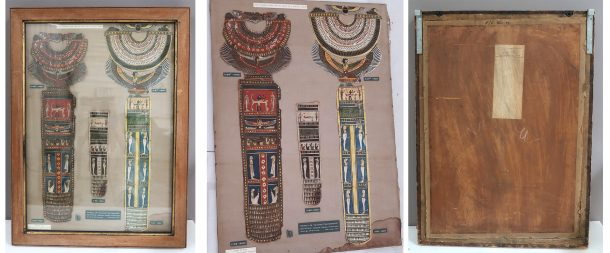
Assessing and Preparing Artefacts for Display
For the Making Egypt exhibition, artefacts were allocated to different conservation areas based on their material and attributes. Working within the sculpture studio involved caring for a range of items, including ancient cosmetic palettes and three exceptionally fragile mummy cartonnages.
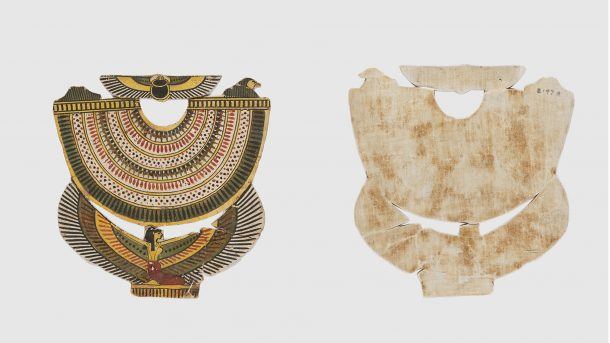
The mummy cartonnages had not seen the light of day for decades, encased in outdated frames. The conservation process began with a careful examination, marking a thrilling moment akin to entering an ancient tomb. As layers were removed and each piece was unveiled, the fragility of these artefacts became increasingly apparent.

The Conservation Challenge
Upon close scrutiny, the cartonnages revealed a composition of linen layers coated in gesso, embellished with paint and, in some instances, gold leaf. Rusting metal pins, once used to secure them to a backing board, had caused damage that required delicate handling to avoid further degradation.
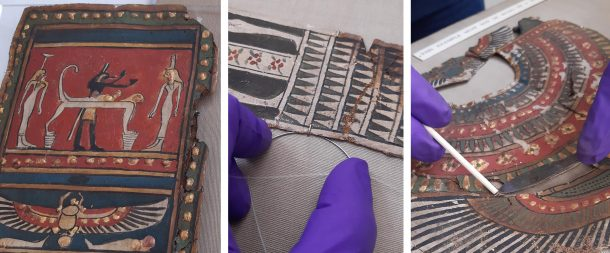
After carefully extracting the pins, the cartonnages were laid on transparent sheets for close assessment. Fortunately, they had previously been lined to offer some structural support to areas of weakness.
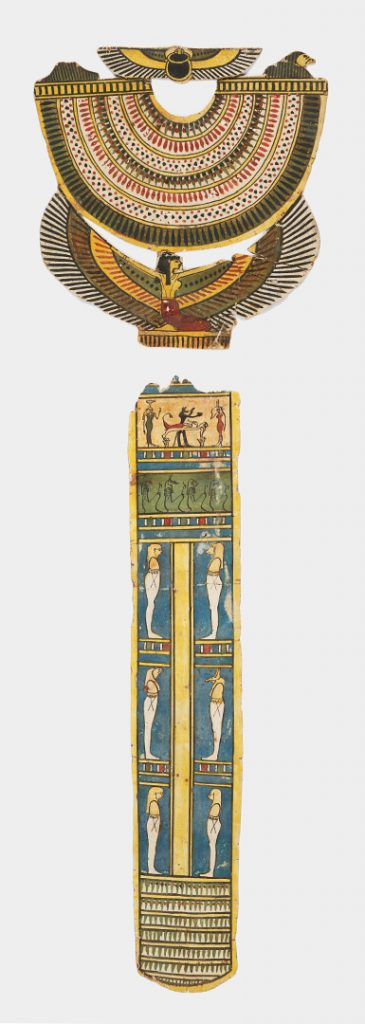
Finding a suitable adhesive to stabilize peeling paint was critical, especially considering the potentially hazardous nature of the pigments involved. Collaboration with other experts in conservation highlighted the importance of shared knowledge in tackling such intricate restoration tasks.
Understanding the Historical Context
The three mummy cartonnages once adorned three distinct bodies, possibly harvested and fragmented during archaeological discoveries to maximize profit from their sale. Each panel will tell a larger, interconnected story, as they originally formed part of grander compositions that included masks and foot panels, many of which remain lost to history.
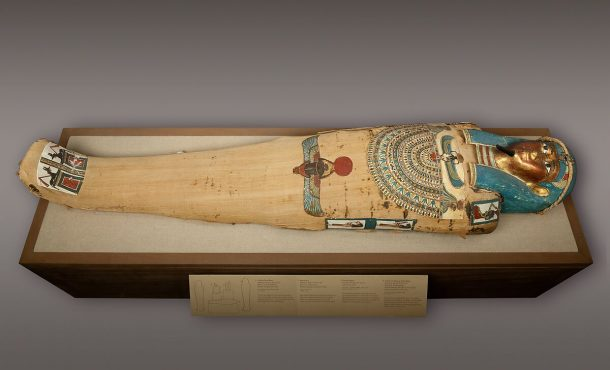
These artefacts were acquired as a part of a significant collection from Major William Joseph Myers, a military officer with a keen interest in Egyptian antiquities collected during his service abroad. Upon his passing, a substantial portion of his Egyptian collection was bequeathed to the V&A, enriching the museum’s holdings significantly.
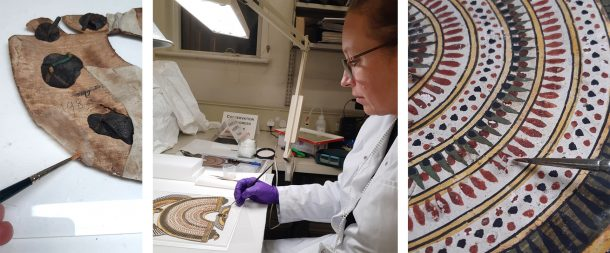
The Symbolic Designs of the Cartonnages
The designs featured on the mummy cartonnages resonate with traditional Egyptian beliefs, often depicting deities associated with death and the afterlife. Notable figures include:

- Isis, the winged goddess
- The sons of Horus, protective deities of canopic jars containing the organs of the deceased
- Anubis, the god of mummification, depicted over a mummified figure
- The winged scarab, symbolizing rebirth
In certain cartonnages, inscriptions or spells were intended to guide and protect the deceased in their journey into the afterlife, a practice rooted in the belief that proper preparation enabled a smooth transition into divinity.
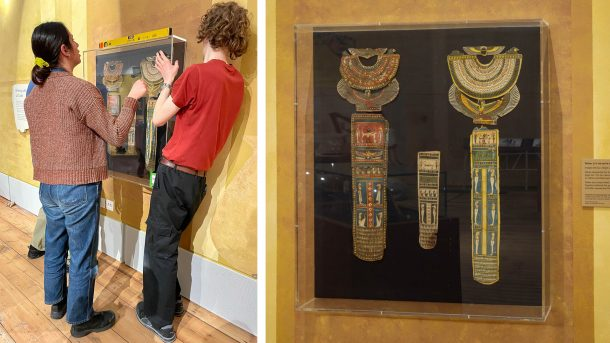
Reinforcement and Final Preparations
To ensure lasting stability, fragiles areas were reinforced using Japanese paper and a meticulous application of adhesive stabilized the painted surfaces. Once completed, the cartonnages were securely attached to new backing boards, ensuring protection during transport for display.
Collaborative discussions about the mounting process among conservation teams determined that padding before fabric covering could provide secure support for the artefacts without risk of damage. Stainless steel pins replaced the rusty ones, in locations that would safeguard the integrity of each piece.
Final Display and Acknowledgments
After comprehensive installation and securing of display cases, the cartonnages were finally transported to the Young V&A, ready to intrigue visitors. This project was a collaborative effort, deserving acknowledgment for the teamwork involved, particularly from the V&A curator and associated organizations.
Sum Up and Reflect
The journey of these mummy cartonnages not only illuminates the complexities of conservation but also underscores the need to preserve our historical narratives. While expert opinions and research illuminate important insights, personal experience with such artefacts and their stories will always hold a unique value.
For those looking to engage further with history, GetTransfer.com offers a seamless service, allowing travelers to hire cars with drivers from verified providers at reasonable prices. This ensures you can embark on your explorations without unnecessary hassle, allowing you to reflect on the beauty of the past and its influence on our present, all while enjoying the convenience of travel. Book your ride with GetTransfer.com today and dive into your next adventure!

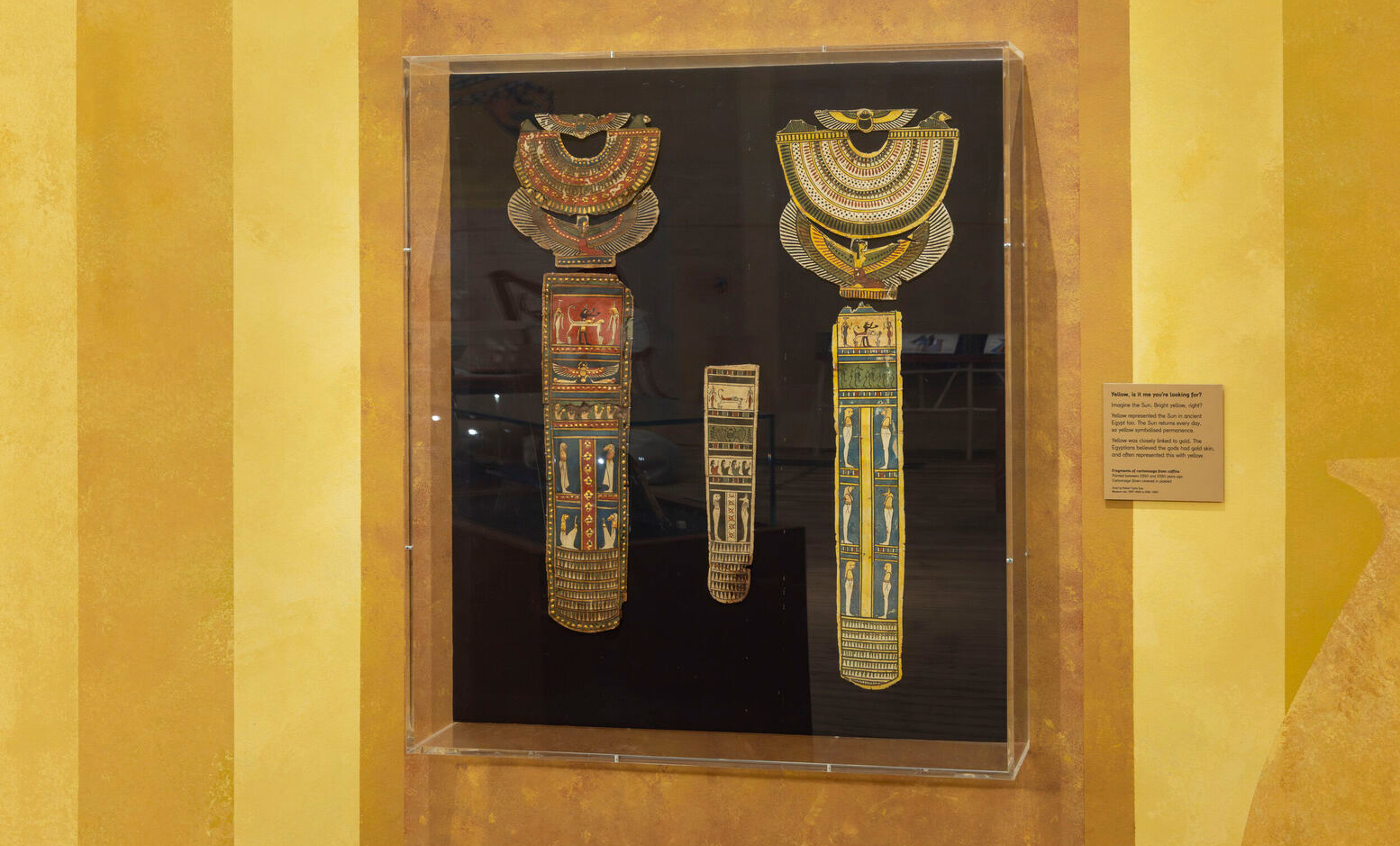
Comments